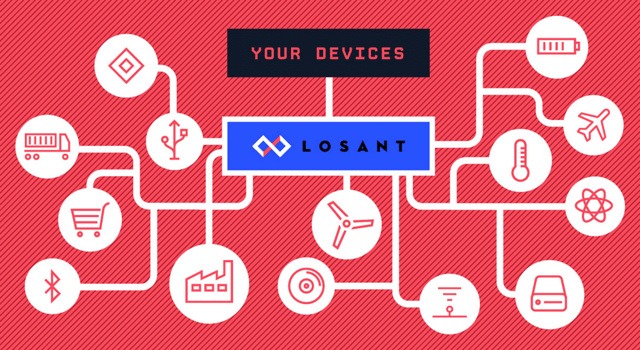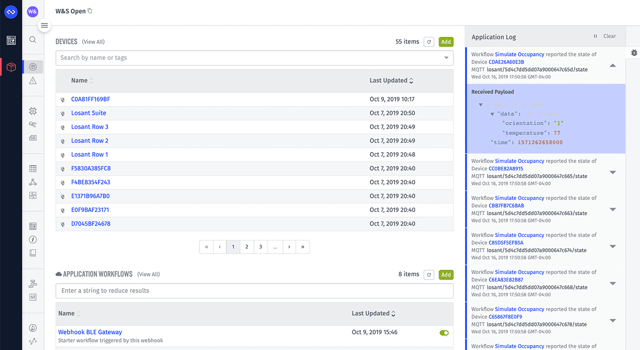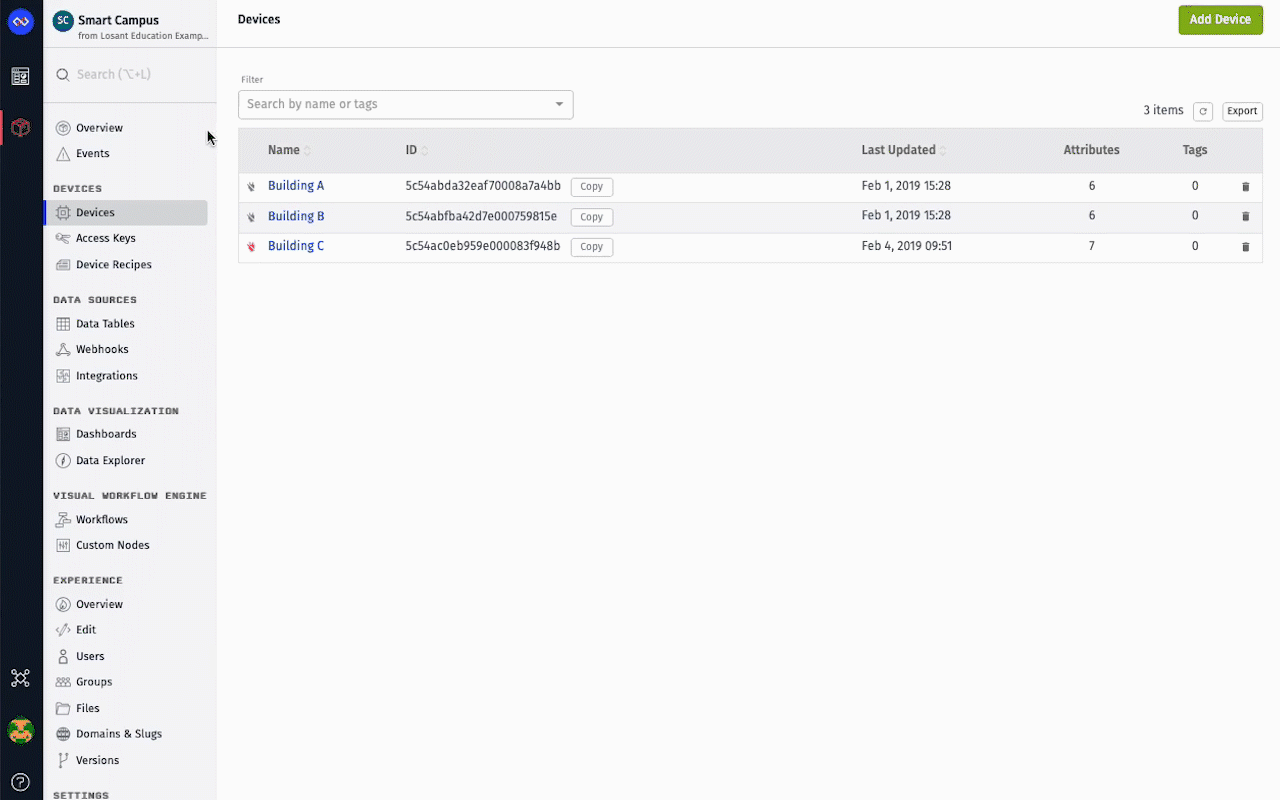An IoT application, at its simplest, is a means of collecting and organizing data from devices. Once the data is organized, the true value of IoT can be realized—decisions can be made, new ideas can be developed, data can be read, and additional streams of revenue can be unlocked. But, before you can reap those benefits, you need data. How do you get it?
Turns out, your organization may already have a lot of data coming from connected devices that is perfect for IoT. For example, if your enterprise uses GPS trackers to monitor assets in transit, you can use IoT to analyze that data. If your agriculture company monitors moisture levels of soil, you can use IoT to automatically water the crops, only as needed. See this case study from our client, Knode, for more information.
Every device example above can be represented as a device within Losant and can show you a virtual model of your device.
And if your enterprise doesn’t currently track data, Losant supports a wide variety devices so you can use the best ones for your needs and your budget. Interoperability between devices is key to a successful IoT solution, and most platforms, including Losant, include that feature out of the box.
Let’s take a look at how Losant orchestrates data from devices and other data sources to provide value to enterprises.
What is Device State?
Before diving into devices, you need to know about device state. Device state represents a snapshot of the device at some point in time. For example, if the device has a temperature sensor, it might report the temperature every minute. This data forms the backbone of an IoT solution.

What are Devices?
A device within Losant is a source of data. Losant is hardware agnostic, which means that anything that reports data to the cloud, whether it be a motion sensor, a thermometer, a GPS, or just a web service, will work as a device in the Losant environment. As long as data is reported, and that data can get to the cloud, it is a device.

There are five types of devices in Losant:
- Standalone: Devices that connect directly to Losant and report their own states.
- Gateway: Devices that connect to Losant and report both their own state and the state of other devices. Used primarily for devices that do not connect directly to the internet, such as Bluetooth sensors.
- Edge Compute: Devices that run the Losant Edge Agent and can run edge workflows directly on the device itself.
- Peripheral: Devices that do not connect directly to Losant. Instead, peripheral devices report their state either to a gateway or Edge Compute device and that gateway pushes the peripheral’s state to Losant.
- System: Devices that behave more as a grouping mechanism and a model of a larger physical environment than a typical device. Instead, their state attributes are an aggregation of the raw data reported by their child devices.
How is Data Read?
Anything that reports data can be a device. Data is reported to Losant through a number of industry standards. In Losant, when you add a device to your configuration, you specify attributes. Attributes are properties of a device that define the data that can be reported as state against that device. You can define the attributes that you want to use for your solution, and ignore those that you don’t.

No matter what data you’re reporting, Losant can put it to use.
What Can You Do with Data?
In short, lots! You can use data to monitor the temperature of a room to determine when to turn on the air conditioning. You can use it to help people maintain social distancing guidelines. Even during a pandemic, you can use it to keep your facilities clean and safe for customers. See the following video for a detailed breakdown of a smart environment demo, and learn what is possible with IoT.
Still not convinced? Our case studies offer a close look at real world examples of IoT data being put to work.
Put Data to Work
With Losant, you can add as many devices as you need, and adjust that count as those needs change. Should you need new devices to measure different attributes, you can add those too. Losant includes the scalability and flexibility your team needs now, while being ready for any future challenges that may arise.
Want to take devices and data sources for a spin? Try Losant for free, now, in the Losant Sandbox, and see Losant University for a real close look.
